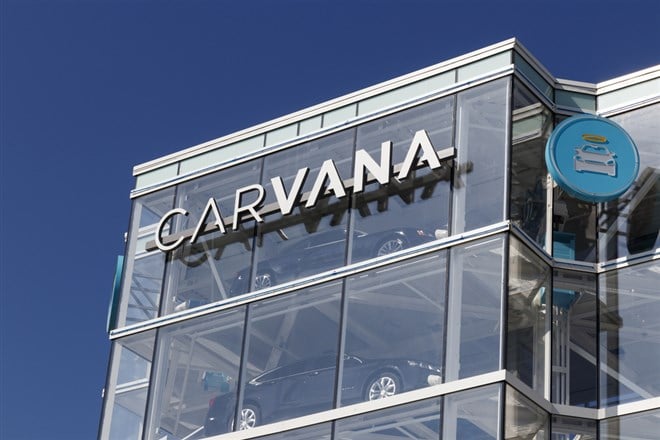
Any space in the financial markets, and the economy for that matter, that becomes too hot and attracts the masses is bound to have some sort of crash sooner or later. No, this is not about crypto, some hot technology startup, or even a sophisticated bank collapse. This one space that has been delivering blows to everyday citizens lies in the used car market.
Car note owners who find themselves under the term 'negative equity'—meaning they owe more on their car note balance than their vehicle is currently worth—increased in overall population by 29% in the first quarter of 2023 when compared to the same period a year prior. This accelerated and tragic increase came by the hand of two agents at play. First and foremost, interest rates have been rising for the better part of 2022 and will continue into 2023, as announced by FED Chairman Jerome Powell.
Consequently, these rising rates have made the cost to own a vehicle out of reach for most Americans, as average car loan interests increased to 10.26% in 2022, up from just 8.3% in 2020-2021. While these rate increases may not sound like much, the underlying monthly payments for a car look inflated when considering the rising costs in other areas of everyday life.
The second agent working against would-be car buyers, and the companies that rely on these consumers to effectively go through their purchases, is the rapid decline in used car values. As the COVID-19 pandemic effects spread to all corners of the economy, chip shortages took a heavy hit on new car delivery times, as many new car dealers ran out of new inventory faster than usual and to this day still have to put in orders for a future date when a customer walks in to buy a new car.
These effects caused the used car market to skyrocket as consumers looked to the alternative once new car availability dried up, however as supply chains are easing and costs of living take off, leveled demand has brought the average used car price down as pointed by the Used car and truck Consumer Price Index (-11.6 down from 41.2 just a year ago).
Carvana's demise
Used car seller Carvana (NYSE: CVNA) has seen the uglier end of the stick in this unfortunate situation, as past heating demand trends in the used car market prompted management to erroneously load up on inventory just before the industry took a contraction turn. Not only did the company's units sold slow down significantly in the fourth quarter of 2022, showcasing a 29% decline from the previous year, but also a significantly lower profit margin per vehicle for the whole year.
In 2020-2021, Carvana got really comfortable with making $3,200 to $4,500 gross profit per vehicle, not thinking that the market could take a turn for the worse and bring them down to only $2,000 gross profit per vehicle in 2022, a trend that will be hard to stop into 2023. This slowdown in units sold and gross profit did not prompt a budget cut in Carvana's marketing and administrative department until it was too late, reflecting a net loss of $1.5 billion USD, or $14.89 per share.
Renewed hope for a turnaround
Carvana had run into some liquidity troubles as it faced up to $486 million in interest payments on its outstanding issued bonds. The problem was that they did not achieve the expected profitability or enough cash to pay these charges. In 2023, CEO Ernie Garcia III has devised a plan to swap old bonds for new ones totaling $1 billion USD in added liquidity maturing in 2028 rather than 2025 and 2023. These new bonds will pay 9% in cash and 12% in-kind and will also be sold at $61.25 to $80.75 cents on the dollar (the par value of bonds is $100). What this basically means is that Carvana is offering high-interest payments and a decent upside for the bonds to rally up to par value if the company achieves its turnaround strategy.
Considering the added interest expenses that the new financing will bring onto the company, estimated at $905 million for 2023 with previous notes and credit facilities in this mix, Carvana would have only one year left to act on the CEO's plan to reach profitability. If the company does not become profitable by the end of 2023, it would effectively run out of cash to continue its operations. Investors can conclude this by subtracting the $905 million in interest expenses from the total $1 billion in new financing. Of course, they could always issue more shares, but it is better to keep it simple.
Ernie Garcia III, the CEO, stated in the latest earnings call that the worst is behind the company and that the team is working hard to achieve over $1 billion USD in savings to help achieve profitability in 2023. Management is also pointing to contracting revenues in the first quarter of 2023. Sensibly, investors can expect a net decrease in revenues for 2023. The company is further targeting a 15-19% long-term gross margin, which would effectively deliver net profits in the tune of $331 million USD, assuming that marketing and selling expenses achieve a conservative $700 million in savings, rather than the targeted $1 billion.
Are targets acceptable?
Analysts are targeting the stock at a consensus $37.80 per share, however analysts at JP Morgan (NYSE: JPM) expressed that there is "no equity value with these debt levels" and completely removed their targets.
Turnarounds aren't pretty nor smooth, however, Carvana can be the story of the year if they can deliver on their cost-cutting initiatives and achieve profitability along with pre-pandemic margins. This is what investors ultimately should be looking for, and assuming no further shares are issued, a 15% gross margin with $1 billion in savings can translate to earnings per share of $3.01. A 10x P/E multiple can prove some of these analysts right.
